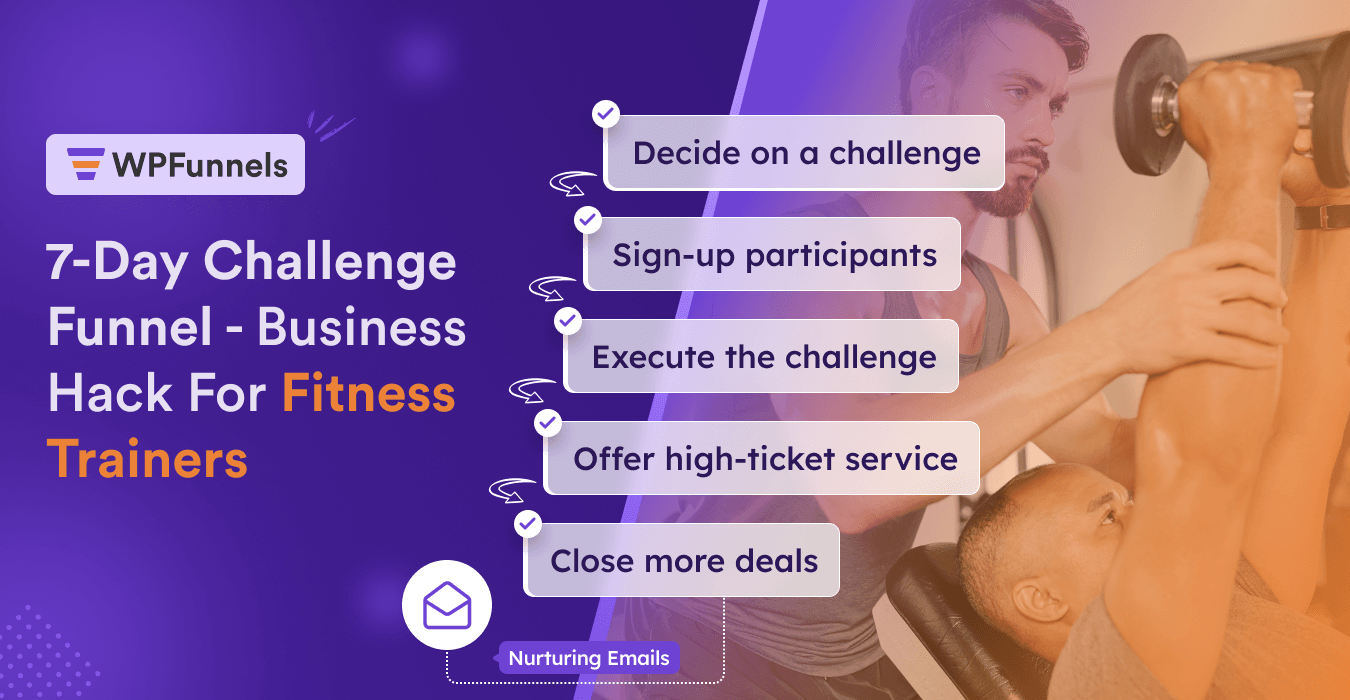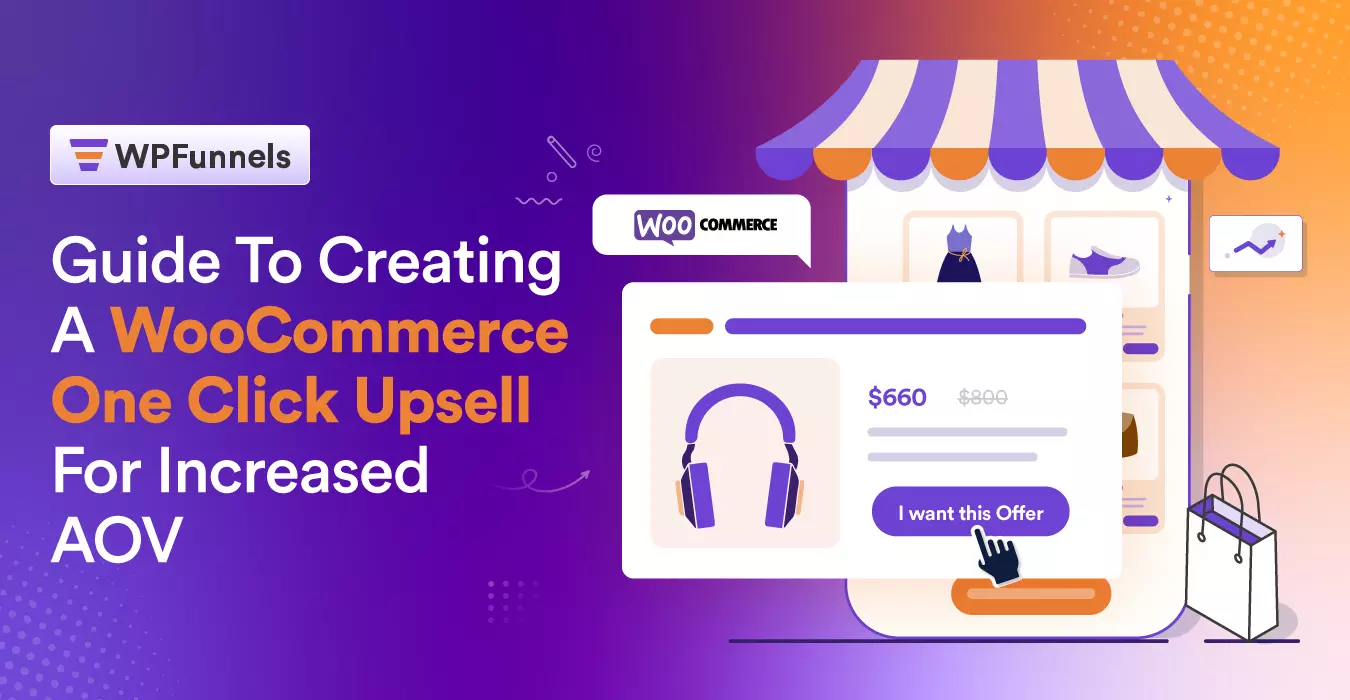Cart abandonment is a serious issue for any online business. If you observe your online store, you will notice that a lot of clients will add products to the cart but eventually not complete the purchase. And this usually is not a small number.
It is estimated that around 70% of all potential online buyers abandon carts.
This means you are regularly losing the opportunity to convert 3 times more clients than you are achieving now.
But guess what, you have an opportunity to reduce this huge loss. There are several cart abandonment strategies you can optimize your e-commerce shop.
Today you will learn about 8 proven strategies that will help you reduce cart abandonment significantly and grow your revenue.
So, let’s get started.
What is Cart Abandonment?
Cart abandonment happens when you add items to your online cart but leave the website without completing the purchase. This can occur for many reasons, like finding unexpected shipping costs or facing a complicated checkout process.
If you’ve ever added products to your cart but left the site, you’ve experienced this firsthand. To tackle this issue, consider using effective cart abandonment strategies tailored to your needs.
This might include sending cart abandonment emails to remind you of your items. It helps to simplify your checkout process or offer incentives to finalize the purchase.
By understanding and addressing the reasons behind your cart abandonment, you can significantly reduce cart abandonment rates and improve your overall shopping experience.
8 Effective Cart Abandonment Strategies to Recover Lost Sales
![8 Effective Cart Abandonment Strategies To Recover Lost Sales [2025] 2 Cart Abandonment Strategies](https://getwpfunnels.com/wp-content/uploads/2024/08/Cart-Abandonment-Strategies.webp)
Since cart abandonment is not something you can control directly, you have to think of unique ways, from improving the checkout process to customizing the cart process.
Eventually, it convinces your prospects not to leave without completing the purchase. Following are 8 such cart abandonment strategies that can be used to get good results.
1. Make The Checkout Process Distraction-free
A complicated checkout process often leads to high cart abandonment rates, and you don’t want that for your e-commerce site. To help you reduce cart abandonment here are some personalized tips:
- Display Necessary Form Fields Only: Keep your checkout form simple by including only essential fields. For example, if you’re selling B2B services, you’ll need the “Tax No,” but for digital products, you can skip address fields. This makes the checkout process smoother and easier for you and your customers.
- Use a Clear & Concise Form Layout: Avoid overwhelming your customers with a cluttered form. Consider a two-step or multi-step checkout layout to simplify the process. An Express checkout option that keeps product and pricing details visible can help your customers stay focused on completing their purchases.
- Add a Progress Bar for Multi-Step Checkouts: If you choose a multi-step form, adding a progress bar helps your customers see how far they’ve come and what’s left. This keeps them engaged and can help prevent checkout abandonment.
- Enable Google Auto-Complete: For your returning customers, enabling Google auto-complete can make checkout quicker and easier. This feature helps complete their information with just a few clicks, reducing cart abandonment.
- Consider Guest Checkout: Allowing guest checkout can be a great way to reduce barriers. Many of your customers might prefer to complete their purchase without going through a registration process. So offering this option can improve their experience and boost your conversion rates.
By applying these strategies, you can enhance your checkout process and recover abandoned baskets more effectively.
2. Highlight Clear Return & Refund Policies
When selling physical products, it’s crucial to address buyers’ concerns about product quality and returns. Here’s how you can implement effective return and refund policies to reduce cart abandonment and enhance customer confidence:
- Create a Detailed “Return and Refund Policies” Page: Establish a dedicated page on your e-commerce site that clearly explains your return and refund policies. Ensure the information is straightforward to understand. It helps to address common customer concerns about quality and refunds.
- Link Policies on Product and Checkout Pages: Make it easy for customers to find your policies by adding links or tooltips on product pages and checkout pages. This transparency helps customers feel more secure and reduces hesitation during the purchase process.
- Offer Smart Alternatives to Refunds: While refunds are a common expectation, offering alternatives like gift cards or store credits can encourage customers to complete their purchases. Providing these options can give customers more flexibility and confidence. It makes them more likely to proceed with their purchase rather than abandon their cart.
By clearly outlining your return and refund policies and offering alternatives, you can significantly enhance customer trust and reduce checkout abandonment.
This approach ensures a smoother purchase process and encourages potential buyers to follow through with their orders
3. Gain Trust To Reduce Cart Abandonment
If customers lack trust in your website, they’re more likely to abandon their carts. To build confidence and reduce cart abandonment, here are some effective strategies:
- Maintain a Positive Online Reputation: Actively manage your online reputation by encouraging satisfied customers to leave positive reviews and addressing any negative feedback quickly and professionally. Highlighting good customer reviews and testimonials on your eCommerce website can help build trust and reduce checkout abandonment.
- Display Trust Indicators: Use trust indicators to reassure your customers of your legitimacy. Display security badges, certifications, and trust seals from reputable third-party organizations. Make sure to showcase your customer satisfaction guarantees and secure payment options clearly to increase concerns and foster trust.
- Provide Clear and Transparent Contact Information: Make it easy for your customers to contact you by displaying a dedicated support email address or phone number. Showing that you’re accessible and responsive helps build trust and reduces the likelihood of cart abandonment. You can also use a virtual answering system to handle calls efficiently and make sure no customer query goes unanswered.
- Showcase Social Proof: Leverage social proof by highlighting positive customer experiences, testimonials, and endorsements from influencers or industry experts. Featuring these elements prominently on product pages and during the checkout process can build credibility and reduce shopping cart abandonment.
- Ensure a Secure and User-Friendly Website: Implement SSL certificates to encrypt sensitive customer data and reassure them that their information is protected. A secure, smooth, and user-friendly website enhances trust and reduces concerns about payment security, making customers more likely to complete their purchases.
By focusing on these trust-building strategies, you can mitigate cart abandonment and improve your overall conversion rates.
4. Offer Multiple Payment Options
![8 Effective Cart Abandonment Strategies To Recover Lost Sales [2025] 3 multiple Payments - Cart Abandonment Strategies](https://getwpfunnels.com/wp-content/uploads/2024/08/Purple-And-Yellow-Email-Marketing-Facebook-Post-4.webp)
A surprising number of buyers abandon their carts simply because their preferred payment options aren’t available.
When we launched Mail Mint, for example, we lost potential sales because we only accepted Stripe and not PayPal, a preferred method for many customers.
To reduce cart abandonment and improve your cart abandonment strategies, consider these actions:
- Set Up Different Payment Gateways: Offering a variety of payment options is crucial. Research the most commonly used payment methods in your target market and integrate them into your website. Include popular options like PayPal, Stripe, and credit card processors to make it convenient for customers and reduce checkout abandonment.
- Offer Cash On Delivery (COD): For local customers who might prefer to pay in person or lack online payment options, offering Cash on Delivery can be a game-changer. This flexibility helps accommodate different offline payment preferences and minimizes cart abandonment.
- Provide Partial and Split Payment Options: For high-end or expensive products, offering partial or split payment options can ease financial barriers. It allows customers to pay in installments or a portion upfront makes expensive items more accessible and encourages purchase completion, reducing abandoned baskets.
Addressing these payment concerns can significantly lower cart abandonment rates and improve customer satisfaction.
5. Reduce Concerns About Payment Security
To build trust and minimize cart abandonment, it’s essential to address customer concerns about payment security.
If customers feel unsure about the safety of their payment information, they might hesitate to complete their purchase.
Here’s how you can enhance payment security and reassure your customers:
- Implement an SSL Certificate: An SSL (Secure Sockets Layer) certificate encrypts sensitive data, such as credit card details, during transmission between the customer’s browser and your website. This encryption ensures a secure connection and boosts confidence in the safety of their payment information. Obtaining an SSL certificate from a reputable provider demonstrates your commitment to protecting customer data.
- Use Trust Badges and Security Seals: Display trust badges or security seals prominently on your site, especially on pages where customers enter their payment information. Icons representing secure payment gateways or recognized security certifications reassure customers that their payment details are protected. These visual indicators reinforce the message that your site uses strong security measures and sticks to industry standards.
By implementing these strategies, you can effectively reduce checkout abandonment related to payment concerns and enhance the overall user experience.
With improved security measures, customers will feel more confident in completing their purchases, ultimately boosting your conversion rates.
6. Improve User Experience For Customers
A poor user experience can significantly affect customer engagement and lead to increased cart abandonment. When you encounter delays, frustrations, or difficulties on a website, it can deter you from completing a purchase.
To ensure a positive experience and minimize cart abandonment, consider these strategies:
- Improve Website Speed: Slow-loading pages can be a major frustration. To keep you engaged and reduce checkout abandonment, optimize your website by minimizing unnecessary scripts, compressing image sizes, and utilizing caching techniques. Faster checkout leads to a smoother experience and less chance of cart abandonment.
- Ensure Mobile-Friendliness: If you’re shopping on your smartphone or tablet, a mobile-friendly site is crucial. Make sure text is easy to read, images are properly scaled, and navigation is straightforward. A well-optimized mobile site enhances your experience and reduces barriers that could lead to abandoned baskets.
- Streamline Navigation and Search: Clear and intuitive navigation helps you find what you need quickly. Implement a well-structured menu that’s visible on every page and a search function that allows you to easily locate specific products. This clarity ensures a smoother shopping experience and decreases the chance of cart abandonment.
By focusing on these aspects, you can improve your website’s user experience, keeping you engaged and reducing the risk of checkout abandonment. Let’s now address how to handle shipping, tax, and additional costs effectively.
7. Reduce Shipping, Tax & Additional Hidden Costs
High shipping costs and unexpected fees can lead to checkout abandonment. To address these issues and reduce cart abandonment effectively, consider these strategies:
- Display Cost Breakdowns: Be transparent by showing a detailed cost breakdown on the checkout page. List shipping fees, taxes, and any additional charges. This prevents surprises and helps customers make informed decisions, reducing checkout abandonment.
- Offer Free Shipping Promotions: Free shipping is a powerful incentive. Offering occasional free shipping promotions can motivate customers to complete their purchases by removing extra costs and adding value to their shopping experience. This strategy can help overcome price objections and reduce cart abandonment.
- Provide Estimated Delivery Dates: Set clear expectations by providing estimated delivery dates based on shipping methods and destinations. This helps customers plan their purchases and reduces uncertainty about when they will receive their orders. It enhances customer satisfaction and decreases cart abandonment.
- Offer In-Store Pickup: If you have a physical store, provide in-store pickup as an option. This eliminates shipping costs and can speed up delivery. In-store pickup is convenient and appealing for customers who prefer a more immediate and hands-on experience. It helps to reduce abandoned baskets. To make this process smoother, use a warehouse management system to keep track of inventory and ensure products are ready for quick pickup.
Implementing these tactics will help you address common issues related to shipping and fees, ultimately reducing cart abandonment and improving your overall sales conversion rates.
8. Use Action-oriented CTA During Checkout
The effectiveness of your Call-to-Action (CTA) is important in minimizing cart abandonment and driving conversions.
A well-crafted CTA brings confidence and motivates customers to complete their purchases. Here are actionable tips to optimize your CTAs:
- Have Persuasive CTAs Tailored to Your Business Niche: Create CTAs that resonate with your target audience and align with your specific business niche. For example, a makeup website might use a CTA like “Send Me Makeup!” instead of a generic “Buy Now.” Personalized CTAs create a more engaging experience and reduce cart abandonment.
- Use Action-Oriented Language: Opt for assertive phrases that prompt immediate action. Instead of passive phrases like “Learn More,” use dynamic CTAs such as “Get Your Exclusive Offer” or “Start Shopping Now.” Action-oriented language creates urgency and excitement, increasing the likelihood of purchase completion.
- Highlight Benefits and Incentives: Incorporate the unique selling points and benefits of your products in your CTAs. For instance, a CTA like “Unlock Clearer Skin Today” emphasizes the benefits customers will gain, making the CTA more compelling in reducing checkout abandonment.
- Optimize CTA Placement: Strategically place CTAs throughout your website. Ensure they are visible and accessible on product pages, shopping carts, and checkout pages. Clear and prominent CTAs guide customers through the purchasing process and minimize abandoned baskets.
- Email with CTA: A targeted call-to-action email can effectively reduce cart abandonment by reminding customers of their incomplete purchases and encouraging them to finalize their orders. By offering a direct link to their cart and potentially an incentive, you motivate them to complete their purchase and recover lost sales.
By implementing these strategies, you can craft CTAs that effectively persuade customers and enhance their purchasing experience. ultimately reducing cart abandonment and improving your conversion rates.
Conclusion
In conclusion, Addressing cart abandonment is essential to boosting your e-commerce sales. By implementing effective cart abandonment strategies, you can significantly reduce abandonment rates and recover lost sales.
Consider implementing shopping cart abandonment tools to engage almost-converted customers. Email reminders and personalized offers can help address customer hesitation and recover abandoned baskets.
WPFunnels can be quite effective in this regard, offering a comprehensive solution to create an easy shopping experience and improve customer transactions.
By integrating these strategies and tools, you can better manage potential customers, reduce checkout abandonment, and turn cart abandoners into loyal buyers.
** FAQs **
What is the formula for shopping cart abandonment?
- To calculate the shopping cart abandonment rate, use this formula: Cart Abandonment Rate= (Number of Abandoned Carts/Number of Initiated Checkouts)×100. This helps you understand what percentage of shoppers are leaving before completing their purchase.
How do you improve abandoned cart flow?
- To improve your abandoned cart flow, consider using follow-up emails and exit intent pop-ups. Sending a reminder email with a discount or incentive can entice customers to return and complete their purchases. Additionally, simplify the checkout process to reduce friction and make it easier for customers to finalize their orders.
What is a good cart abandonment rate?
- A good cart abandonment rate typically ranges from 60% to 80%. If your rate is within this range, it indicates you’re in line with industry averages. Lower rates are better, though, as they suggest more effective strategies and a smoother checkout process.
What are the incentives for cart abandonment?
- Incentives to address cart abandonment include offering discounts, free shipping, or limited-time promotions. These offers can convince customers to complete their purchase by adding extra value or removing barriers that might have led to their abandonment.
What is the primary cause for high abandonment rates?
- A primary cause for high abandonment rates is often unexpected shipping costs. When customers are surprised by additional costs at checkout, it can lead to frustration and cart abandonment. Addressing this issue by being transparent about shipping fees can help reduce abandonment.






![8 Effective Cart Abandonment Strategies To Recover Lost Sales [2025] 1 Cart Abandonment Strategies](https://getwpfunnels.com/wp-content/uploads/2024/08/Cart-abandonment.webp)
![What is Sales Analysis & How to Implement It Efficiently [2025] 4 What Is Sales Analysis And How To Carry It Out Efficiently?](https://getwpfunnels.com/wp-content/uploads/2023/12/What-Is-Sales-Analysis-And-How-To-Carry-It-Out-Efficiently.webp)
![What Is A Landing Page Funnel - Comprehensive Guide [2025] 5 Landing Page Funnel](https://getwpfunnels.com/wp-content/uploads/2024/02/81.-What-Is-A-Landing-Page-Funnel-Comprehensive-Guide.webp)
![14 Valentine's Day Marketing Ideas to Skyrocket Sales in February [2025] 10 Valentin's Day Marketing Ideas](https://getwpfunnels.com/wp-content/uploads/2025/02/Valentins-Day-Marketing-Ideas-1.webp)
![The One Page Funnel – Advanced Tactic to Convert Prospects into Clients [2025] 11 One Page Sales Funnel](https://getwpfunnels.com/wp-content/uploads/2022/12/One-Page-Sales-Funnel.png)

